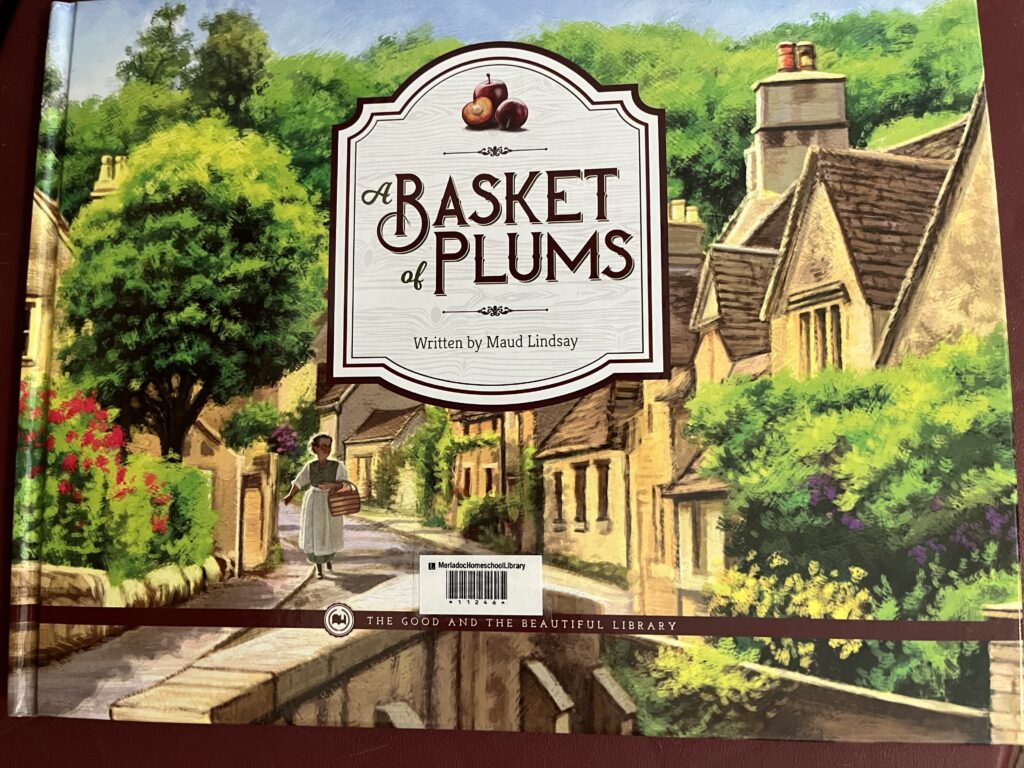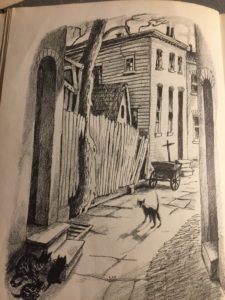This picture book is one of several that I purchased from The Good and the Beautiful recently when that publisher announced that they were going to close out all of their inventory of reprinted children’s books and in future only print original works written by living authors. I’ll say upfront that while the decision may make business sense, it’s a loss to the community. Older books (this one was originally published in 1915) are often treasures to be preserved and enjoyed by a generation that is starving for true, good, and beautiful literature. We are drowning in the new, the current, the flashy, and sometimes deceitful, but we need the the old, the tried, and the true.
Of course, not all old books are excellent, just as not all new books are sub-standard. However, A Basket of Plums would be a lovely addition to any library. Ms. Lindsay was a kindergarten teacher, founder of the first free kindergarten in Alabama. She wrote more than 18 books for children, and she was also a poet.
A Basket of Plums is a gentle story about an elderly woman who sets out from her home with a basket of plums, hoping to find apples for the apple dumpling that she wants for her supper. As the old woman walks along, looking for apples, she finds others in need of what she does have–plums and the things she trades for–but it takes a bit of time, and a few bargains, to find the apples for her apple dumpling.
The illustrations in this modern edition of Ms. LIndsay’s story, by a modern illustrator, Dan Burr, are colorful, photo-realistic paintings that complement the quaint old-fashioned tone of the story. The title old woman in Mr. Burr’s pictures feels like a real grandmotherly figure and at the same she has a storybook quality that goes with the story. That’s a a hard combination to pull off, but Mr. Burr does it beautifully.
If you can find a copy–I have one in my library now— enjoy reading this story to both preschoolers and older children. Other stories about bargaining and trading and barter include Oxcart Man by Donald Hall, A Bargain for Frances by Russell Hoban, Monkey for Sale by Sanna Stanley, and for older children (middle elementary) The Toothpaste Millionaire by Jean Merrill and Alvin’s Swap Shop by Clifford B. Hicks. Oh, I checked and as of June 4, 2023, The Good and the Beautiful has a few copies of A Basket of Plums left. I recommend you purchase a copy now if you’re interested.















